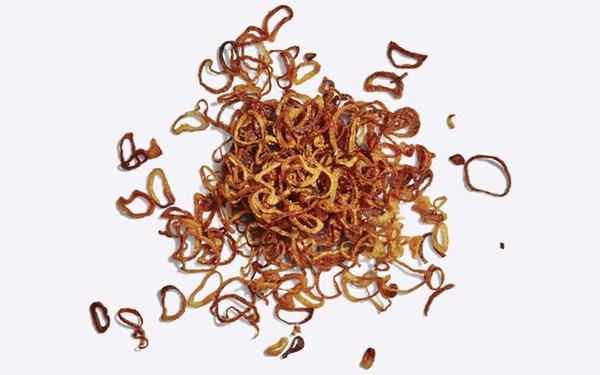The difference between shallots and onions
October 19, 2019 by DarcieAt first glance, a shallot seems like a slimmer, smaller version of its cousin the onion, but they have different flavor profiles and are not equal substitutes for another. As Palisa Anderson writes in The Guardian, each of these wonderful members of the allium family has uses that will best highlight its unique characteristics.

While shallots resemble onions in outward appearance, botanically speaking they more closely resemble garlic, growing in a cluster of bulbs that are each genetically identical to its mother, unlike onions which grow a single bulb per plant. Shallots are also more delicately flavored than onions, an attribute that makes them much more well suited to use in non-cooking applications such as salad dressings.
Anderson recommends using onions for recipes that involve long cooking times and shallots for those with shorter ones, and proposes a general rule of thumb: “Shallots when you require finesse, onions when you need weight.” Shallots are versatile and are at home in almost every world cuisine. They can be found in almost every meal course including dessert, although that is not a common use.
Photo of Crispy fried shallots from Bon Appétit Magazine
Categories
- All Posts (6940)
- Antipasto (2135)
- Author Articles (247)
- Book News (935)
- Cookbook Giveaways (983)
- Cookbook Lovers (257)
- Cooking Tips (109)
- Culinary News (299)
- Food Biz People (552)
- Food Online (791)
- Holidays & Celebrations (272)
- New Cookbooks (149)
- Recipes (1500)
- Shelf Life With Susie (231)
- What's New on EYB (133)
Archives
Latest Comments
- Atroyer7 on Danube Cookbook Review and Giveaway
- demomcook on What foods do you look forward to the most for each season?
- demomcook on Danube Cookbook Review and Giveaway
- Darcie on How cookbooks can help build resilience
- mholson3 on Danube Cookbook Review and Giveaway
- Rinshin on How cookbooks can help build resilience
- sarahawker on Danube Cookbook Review and Giveaway
- Sand9 on Danube Cookbook Review and Giveaway
- hankintoby29 on Heritage Cookies of the Mediterranean World – Cookbook Giveaway
- WBB613 on Feasts of Good Fortune Cookbook Giveaway